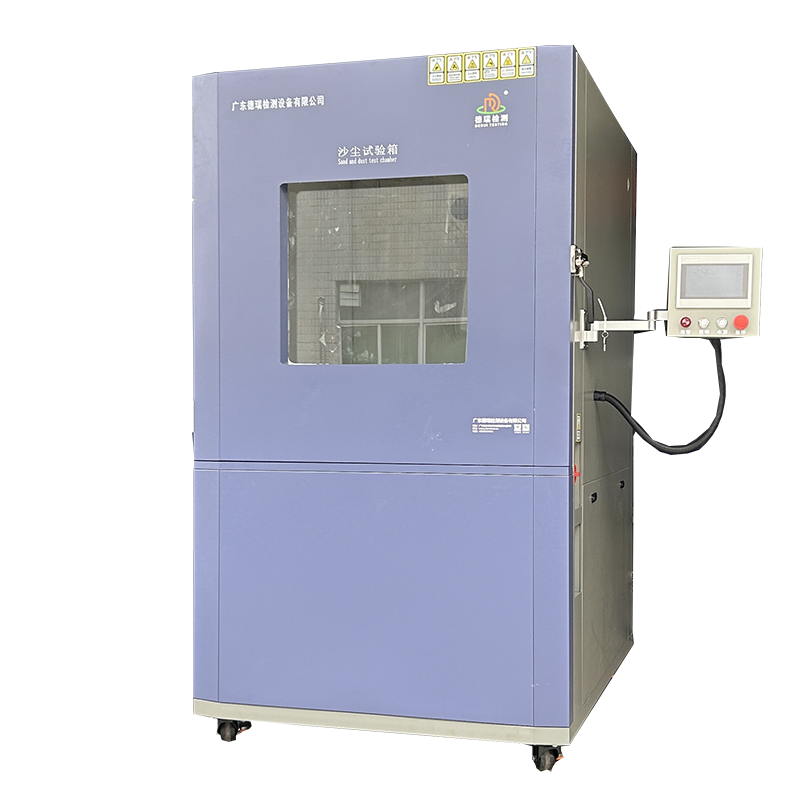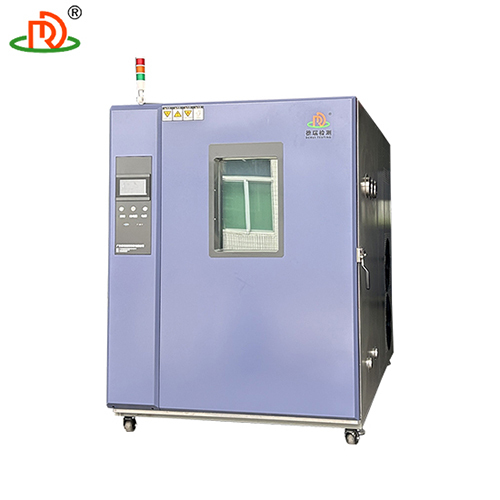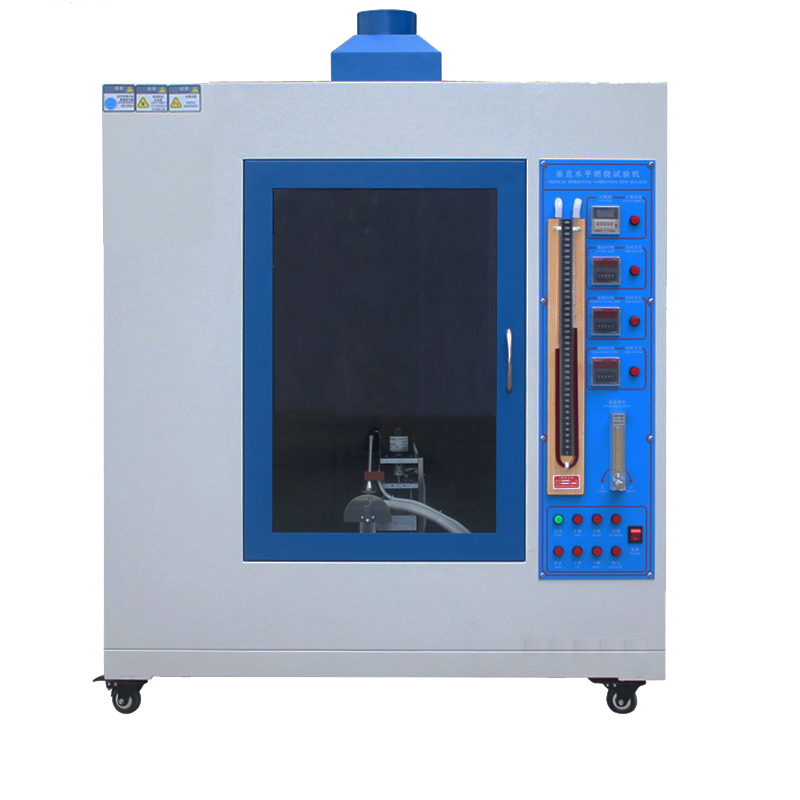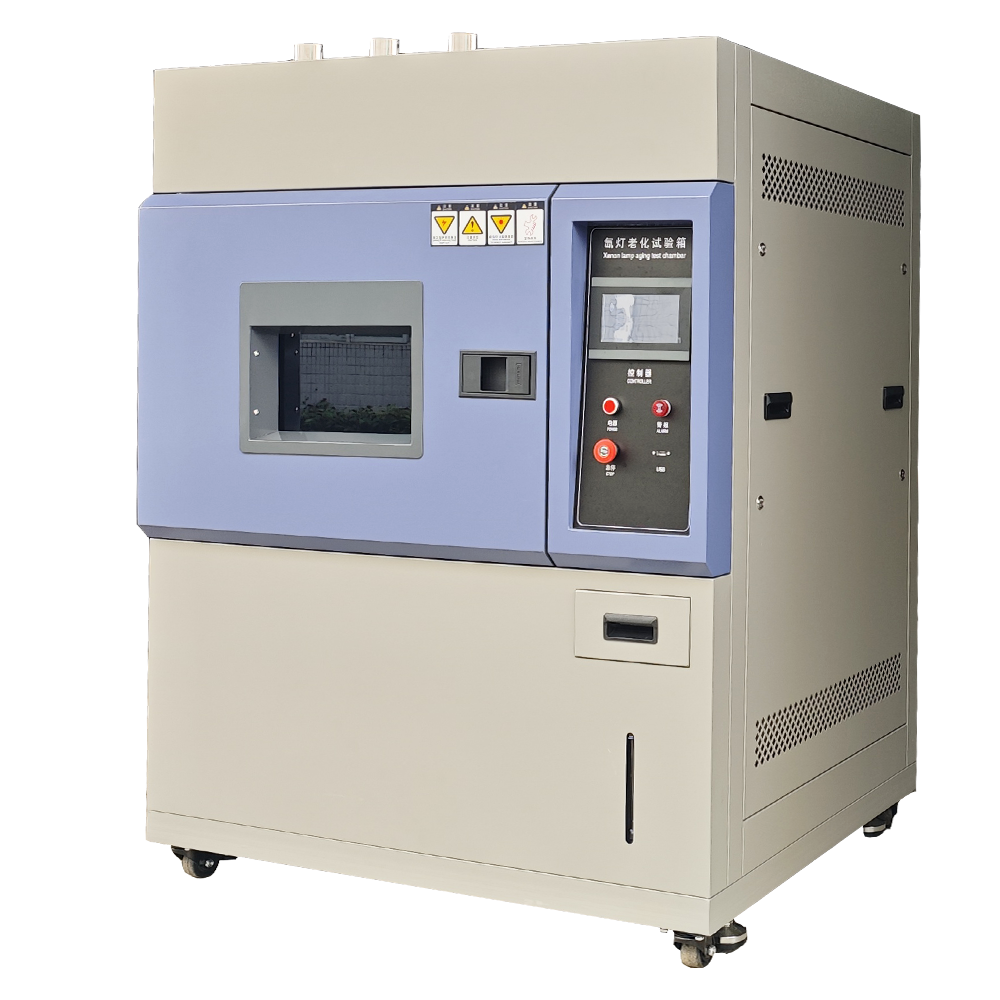Sand and dust test equipment for energy storage systems is specially designed to evaluate the protection, durability and reliability of energy storage systems (e.g. battery storage systems, supercapacitors, fuel cells, etc.) in sand and dust environments. As energy storage systems are widely used in various application scenarios, especially in outdoor and harsh environments, it is especially important to ensure their normal operation in sand and dust environments. The following is detailed information about the sand and dust test equipment for energy storage systems:
1. Functions and Uses
- Simulation of sand and dust environment: Through the sand and dust generating device, sand and dust are generated and circulated to simulate the sand and dust environment that may be encountered by the energy storage system in actual use, such as deserts, construction sites and mining areas.
- Dustproof Performance Test: Evaluates the dustproof performance of the energy storage system in a sandy environment to ensure that its internal components are not subject to dust intrusion, which could affect its performance and safety.
- Comprehensive test: In addition to the dustproof performance, it can also test the performance of the energy storage system under different temperature and humidity conditions, as well as its mechanical and electrical performance.
2. Main technical parameters
- Sand and dust concentration: usually between 2g/m and 4g/m, which can be adjusted according to the test standard.
- Air velocity: usually between 0.5m/s and 10m/s to simulate the sand dust environment under different wind speed conditions.
- Testing time: Programmable control, up to several hundred hours, depending on the test standard and customer requirements.
- Sand and dust type: Talcum powder, silica sand, etc. are usually used as sand and dust sources, and these materials can better simulate sand and dust in the natural environment.
- Internal size: Depending on the model, the size can range from a few cubic meters to tens of cubic meters to accommodate different sizes of energy storage systems.
- Temperature control: Some units are equipped with a temperature control system to simulate sand and dust environments under different temperature conditions, typically ranging from -40C to +85C.
- Humidity control: Some of the equipment is equipped with humidity control system, which can simulate the sand and dust environment under different humidity conditions, usually the humidity range is between 10%RH and 98%RH.
3. Test Standards and Methods
- IEC 60529: International Electrotechnical Commission's test standard on the protection level of the enclosure, which stipulates the dustproof test methods for IP5X and IP6X.
- GB/T 2423.37: Chinese national standard, which specifies the method of sand and dust test in the environmental test of electrical and electronic products.
- ISO 12103-1: International Organization for Standardization (ISO) standard for road vehicles - Environmental conditions and tests, which specifies the method of sand and dust test.
- MIL-STD-810G: U.S. military standard specifying environmental engineering considerations and laboratory test methods, including sand and dust testing.
- UL 9540: Underwriters Laboratories safety standard for energy storage systems, includes requirements for environmental testing.
4. Test Procedure
1.
Initial Testing: Initial testing of the energy storage system for appearance, basic functionality, and electrical performance under standard environmental conditions.
2.
Sample placement: Place the energy storage system in the test chamber to ensure that it is in normal working condition.
3.
Setting parameters: set parameters such as sand and dust concentration, airflow speed, test time, etc. according to test standards or customer requirements.
4.
Start test: Start the test chamber and begin the sand and dust test.
5.
Continuous monitoring: during the test, regularly monitor the performance and status of the energy storage system and record the relevant data.
6.
End of test: After the test, take out the samples, carry out appearance and function checking, and evaluate the test results.
5. Assessment Criteria
- Appearance inspection: Check whether there is any sand and dust deposition on the surface of the energy storage system and whether there is any sand and dust entry in the sealing part.
- Function test: Test whether the functions of the energy storage system are normal and whether they are affected by sand and dust.
- Sealing test: Evaluate the sealing performance of the energy storage system to ensure that sand and dust will not enter the interior and affect its normal operation.
- Electrical performance: Test whether the electrical performance of the energy storage system is affected, such as insulation resistance and contact resistance.
- Safety performance: Test the safety performance of the energy storage system to ensure that no short-circuit, overheating and other safety problems will occur in the sand and dust environment.
6. Application areas
- Battery storage system: Test the dustproof performance and safety of the battery storage system in the sand and dust environment.
- Supercapacitor: Test the dustproof performance and electrical performance of supercapacitor under sand and dust environment.
- Fuel Cells: Testing the dust protection and safety of fuel cells in sand and dust environments.
- Solar energy storage system: Test the dustproof performance and electrical performance of solar energy storage system under sand and dust environment.
7. Precautions
- Safe operation: Operators should wear protective equipment, such as dust masks and protective glasses.
- Equipment Maintenance: Regularly check and maintain the equipment to ensure its normal operation, especially the sand and dust generating device and airflow control system.
- Sand and dust recovery: sand and dust should be recovered in time after use to avoid environmental pollution.
- Temperature and humidity control: Ensure the uniformity of temperature and humidity in the test chamber to avoid localized overheating or over-wetting.
- Environmental control: Keep the test environment clean to avoid external sand and dust affecting the test results.
8. Advantages
- Precise control: able to accurately control the sand and dust concentration, airflow speed and temperature and humidity conditions to ensure the stability and consistency of the test environment.
- Simulation of the real environment: through the composite test of sand and dust and airflow, it simulates the sand and dust conditions in the real environment and improves the authenticity of the test.
- Versatility: Not only sand and dust testing, but also simulation testing of temperature, humidity and other environmental factors.
- Programmable control: Users can set different test parameters as needed to improve the flexibility and adaptability of the test.
- Safety assessment: Special attention is paid to the safety performance test of the energy storage system to ensure its safe operation in sand and dust environments.










 English
English Spanish
Spanish French
French German
German Italian
Italian Chinese (Simplified)
Chinese (Simplified) Japanese
Japanese Korean
Korean Arabic
Arabic Portuguese
Portuguese